6 Books That Shaped Technical Diving
By Matt Reed
As exciting as it is to open your student manual when you sign up for a TDI technical diving class. Other reading material exists which can enlighten you to:
- The history of technical diving
- The pioneers who shaped the industry and how we dive today
Many of the current “must read” books are based around the physics, physiology and the science of decompression diving. While obviously great reading material, they tend to be more science-based and miss some great stories.
The stories which inspired previous generations and recount the experiences of our pioneers. They are relatively older and often absent from today’s reading lists. Some of the classic and valuable books a technical diver can read are stories of “those who went before and led the way.” Here’s a list of 6 books which were considered required reading when I was starting out in technical diving. I believe they each still hold as much interest and learning opportunities for divers today.
1. Deep Diving by Brett Gilliam
This book recounts TDI founder Brett Gilliam’s consummate collection of various groundbreaking deep dives and world records in the early days. It also includes a lengthy discussion of equipment, techniques and physiology. But, for me, the joy is in the stories and the characters. Their (mis)adventures, triumphs and joys which are the foundations of deep diving as we know it today.
Chapter one of Deep Diving will acquaint you with the Who’s Who of scuba diving. These include:
- Frédéric Dumas, the late Jacques Cousteau’s partner
- Deep air record setters Neal Watson and John Gruener, who managed the incredible feat of a 137 m/437 ft air dive in 1968
- Other deep air explorers such as Hal Watts, AJ Muns, and Jim Lockwood
- The failed deep air attempt of Archie Forfar and Anne Gunderson
Gilliam also recounts his own deep air record dives in detail.
Cave diving pioneers such as Tom Mount, Frank Martz, Jim Bowden and Sheck Exley are all featured with amazing stories of daring and exploration. Rob Palmer, Dr. George Benjamin and Joe Prosser are included in a section on the Blue Holes of the Bahamas.
Of course, there is a section on the pioneering women who pushed boundaries, including Zale Parry, Eugene Clarke, Mary Ellen Eckhoff, Ann Kristovich, Karen Hohle, the still-active Dr. Sylvia Earle and the legendary first woman to dive the wreck of the Andrea Doria, Evelyn Dudas.
If you’re wondering who most of these people are and what they did, then Deep Diving is a great way to get to know them!
2. Caverns Measureless to Man by Sheck Exley
One of the most daring cave diving pioneers, this book plots Sheck’s path from fearless beginner to respected cave explorer. A math teacher and talented writer, Sheck Exley skillfully guides even non-divers below the surface into the mysterious and thrilling world of underwater caves.
Exley tells us of his own humble beginnings as a teenager, with stories of misadventure that make you laugh at his innocence, but also gasp in disbelief.
Diving initially without any form of buoyancy compensator and very basic and limited gear, Exley repeatedly found himself in situations that are both frightening and educational:
- Lost in a cave
- Buddy runs out of air
- Squeezing through holes and between rocks with his tanks off
Exley started pushing the limits of conventional diving early.
With a desire to be the best, and a tolerance for nitrogen narcosis, Exley quickly became one of the leading cave divers and explorers of his time. This was especially true in his native Florida, where the freshwater caves were just being discovered. Their endless passages were enticing keen young divers to follow them.
Attracted to caves in Mexico, Sheck Exley started to push deeper and deeper, using Trimix to approach the 300 m/1,000 ft barrier. Inevitably, this would lead to his death in 1994. Nevertheless, the lessons he learned along the way set the safety standards still used in cave diving today. This book is a well-written collection of stories about how those lessons were learned.
3. Basic Cave Diving – A Blueprint for Survival by Sheck Exley
Here Exley consolidated his experiences and accident analysis into a manual of sorts. This was the first time the basic rules of cave diving were published. Rules such as:
- Maintain a continuous guideline to the exit
- Keep one third of your starting gas volume in reserve
- Carry at least lights
These were shared along with the recommendation to use a 1.25-1.5 m/4-5 ft hose to facilitate gas sharing.
Other pro tips like not stirring up silt and not exceeding one’s level of training and experience are great advice from which all divers can still benefit.
4. The Darkness Beckons by Martyn Farr
Quite possibly, the ultimate history of cave diving. Originally published in 1991 and is now on its third edition, published in 2017. Farr tracks cave diving from its muddy beginnings in the dry caves of Europe to more contemporary exploration.
As a dry caver turned cave diver himself, Farr has been involved in the UK and international cave diving scene since the early days. As a result, this book is not just full of great anecdotes, it also contains hundreds of great images from the 1950s onwards.
The book is split into sections for Great Britain and Ireland, European, American and Southern Hemisphere explorations. Each section has its own groundbreaking dive story, including:
- Nuno Gomez in Bushmansgat in South Africa
- Rob Palmer in the Blue Holes of the Bahamas
- Dr. Bill Stone and the WKPP teams in the Wakulla Expeditions in Florida
- Jochen Hasenmayer breaking all kinds of records in the caves of France
- The major exploration of Wookey Hole and other famous sites in the UK
If you want to know who dove a cave first, and how they did it, then this visually exciting book is also the history book you need.
5. The Last Dive by Bernie Chowdhury
For a time, this was the most talked about book in diving. It is the tragic story of a father and son, their adventures and ultimate demise. It sheds light on a lot of things happening at a time when tech diving was starting to become mainstream.
This book spans cave and ocean wreck diving, and can be considered a cautionary tale. As such, it is a very important read for aspiring technical divers who need to appreciate and acknowledge the risks involved. Experience and good decision making is a critical part of remaining safe. Learning from other’s mistakes is a good way to avoid the same fate for yourself.
The unidentified WW2 U-boat known as the U-Who drew the attention of many divers. Chris and Chrissey Rouse who were determined to find some artifacts to help identify the mystery wreck. Alongside many others, such as the now famous John Chatterton and Richie Kohler, the pair pushed their comfort zones.
Unfortunately, the use of Trimix for deep diving had not truly become mainstream as it is today. In a fatal attempt to save some money, the Rouses chose to dive air during a deep exploratory dive that went awry. This led them to ascend way too fast after a long deep dive and pay the ultimate price.
6. Deep Descent by Kevin McMurray
The wreck of the liner Andrea Doria, often described as “The Mount Everest of Scuba Diving,” has earned its moniker. Just like the famous peak, it has claimed lives. McMurray’s book is a somber collection of stories which should serve both as warning and inspiration for any serious wreck diver.
McMurray gives us an emotional history of what was the most impressive ocean liner of its time. It tells the story of its sinking in vivid detail. This happened due to a collision at sea in July of 1956. She was first dived by Peter Gimble. He ended up having a lifelong connection with the wreck. Gimble managed to dive the wreck in 1956 and return with photographs(quite an accomplishment in 1956) which were published in Life magazine. He was later able to return and recover the Bank of Rome’s safe from the ship which contained bundles of cash.
The book recounts a painfully long list of deaths on the Doria. Some were due to equipment failure on what was a very challenging deep dive in the early days of technical diving. Other deaths had possible causes ranging from oxygen toxicity to carbon dioxide poisoning. Some simply resulted from running out of air due to bad planning.
The saddest cause of death in a number of cases seems to be “China Fever.” This was the overpowering need to bring back artifacts that had little true value, other than to prove you went there.
The characters of the Atlantic coast wreck diving scene also add a collection of stories due to personality clashes and competition between charter boats in the area. Men who devoted their lives to diving the area’s wrecks, lost friends, found treasures and, along the way, changed diving forever.
So, of course, this list is just the tip of the iceberg when it comes to great books about technical diving. There are far too many to mention all the other ones, but I’d encourage you to explore the internet and ask your instructor for recommendations. Becoming a confident and competent technical diver is a continuous evolution. It combines training, experience and practice. As the saying goes, knowledge is power. Grab a book, start reading and increase your knowledge!


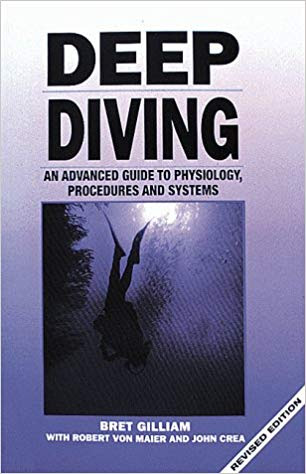
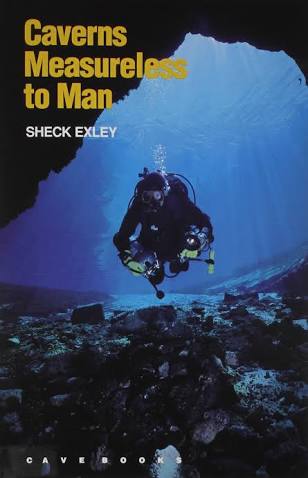
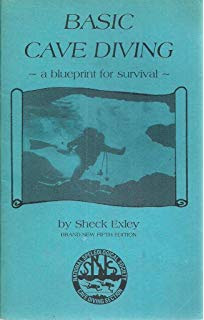


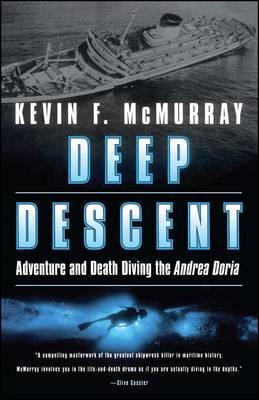

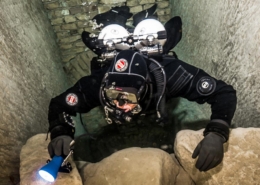






השאירו תגובה
רוצה להצטרף לדיון?תרגישו חופשי לתרום!